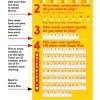Have you ever wondered how slot machines work? Well, here’s a fun and exciting project for you: learning how to make a slot machine in Python! If you’re interested in programming and want to create your own game, you’re in the right place.
In this tutorial, we’ll dive into the world of Python and explore the step-by-step process of building a slot machine. Don’t worry if you’re new to coding – we’ll break it down into simple and easy-to-understand steps.
By the end of this guide, you’ll not only have a better understanding of programming concepts but also a fully functioning slot machine that you can show off to your friends. So let’s get started on this exciting coding adventure!
- Import the necessary libraries, such as random and time.
- Create a list of symbols and their corresponding probabilities.
- Implement functions to generate random symbols and display the results.
- Calculate the payout based on the symbol combinations.
- Allow the user to play the game by betting and spinning the reels.
With this tutorial, you can learn how to make your own slot machine in Python. Have fun coding!

How to Make a Slot Machine in Python: A Step-by-Step Guide
Slot machines have always been a popular form of entertainment, both in physical casinos and online gaming platforms. Did you know that you can create your very own slot machine using Python? In this article, we will guide you through the process of building a slot machine from scratch. Whether you’re a beginner or an experienced programmer, this step-by-step guide will help you unleash your creativity and have fun along the way.
1. Getting Started with Python
Python is a versatile and beginner-friendly programming language that is perfect for creating a slot machine. To begin, make sure you have Python installed on your computer. You can download the latest version of Python from the official website. Once installed, open your preferred text editor or Python IDE and create a new Python script.
In your Python script, begin by importing the necessary modules and libraries. You will need the tkinter module for creating the graphical user interface (GUI) of your slot machine. Additionally, you may want to import the random module for generating random numbers and the time module for adding delays or animations to your slot machine.
Setting Up the GUI
Next, you will need to set up the GUI of your slot machine. You can do this by creating a new tkinter window and adding widgets such as buttons, labels, and images. You may choose to design a simple interface with three reels and a spin button, or you can get creative and design a more elaborate slot machine with exciting animations and sound effects.
2. Designing the Reels
The reels are the heart of the slot machine, displaying the symbols that determine the outcome of a spin. You can design your own set of symbols or use pre-existing images to represent the different symbols. To create the illusion of spinning reels, you can use animations and timers to rotate the symbols on the screen.
Begin by creating a list of symbols that will be displayed on the reels. You can use image files or simple text symbols such as fruits, numbers, or playing card suits. Next, create a function that generates a random combination of symbols for a spin. This function will be called each time the player clicks the spin button. Use the random module to select a random symbol from your list for each reel.
Calculating the Win
After the symbols have been selected for a spin, you will need to determine if the player has won a prize. Create a function that checks the combination of symbols and compares it to the paytable of the slot machine. The paytable lists the winning combinations and their corresponding payouts. If the combination matches a winning combination, display the appropriate message and update the player’s balance accordingly.
3. Adding Sound Effects and Animations
To enhance the user experience, consider adding sound effects and animations to your slot machine. You can use the Winsound module in Python to play sound files when the player wins a prize or spins the reels. Additionally, you can create animations using timers and event handlers to simulate the spinning of the reels or the flashing of winning symbols.
Ensuring Randomness and Fairness
It is important to ensure that your slot machine is fair and unbiased. To achieve this, implement a random number generator that generates truly random and unpredictable results. Avoid using predictable patterns or algorithms that can be exploited by players. Additionally, consider incorporating a random seed or incorporating cryptographic techniques to further enhance the randomness of the results.
4. Testing and Debugging
Once you have completed the development of your slot machine, it is crucial to thoroughly test and debug your code. Test all possible scenarios, including winning combinations, losing spins, and edge cases. Check for any errors, glitches, or unexpected behavior. Debugging your code will help ensure that your slot machine is enjoyable and works as intended.
Optimizing Performance
As your slot machine becomes more complex, you may encounter performance issues or slow execution times. To optimize the performance of your code, consider using data structures and algorithms that are efficient for handling large amounts of data. Additionally, use built-in Python functions and libraries when possible to minimize the time and resources required for calculations or animations.
5. Sharing and Showcasing Your Slot Machine
Once you have created your slot machine in Python, you can share it with others for feedback or even showcase it on your portfolio. Create a standalone executable file using tools like PyInstaller or py2exe, which allow you to package your Python script as a self-contained application that can be run on any computer without the need for Python installation. Share your creation with friends, family, or the online Python community.
Now that you have learned how to make a slot machine in Python, the possibilities are endless. You can customize your slot machine with different themes, add bonus features, or even connect it to a database for tracking player statistics. Remember to have fun, experiment, and continue building your programming skills. Happy coding!
Key Takeaways: How to Make a Slot Machine in Python?
- Python is a versatile programming language to create a slot machine.
- Start by understanding the basics of Python programming.
- Use random number generation to simulate spinning reels.
- Create a graphical user interface to display the slot machine.
- Add features like bets, winnings, and sound effects for a realistic experience.
Frequently Asked Questions
In this section, we will cover five commonly asked questions related to creating a slot machine in Python. Whether you’re a beginner or an experienced programmer, these questions will provide valuable insights into this topic.
1. How do I generate random outcomes for a slot machine in Python?
To generate random outcomes for a slot machine in Python, you can make use of the random module. This module provides several functions for generating random numbers. One commonly used function is random.randint(), which returns a random integer between two given values. You can use this function to generate random numbers representing the outcomes of the slot machine symbols. By using this random number generator in your Python code, you can simulate the spinning and stopping of the reels.
Here’s an example:
import random
symbols = ['cherry', 'bell', 'bar', 'seven']
reel1 = random.choice(symbols)
reel2 = random.choice(symbols)
reel3 = random.choice(symbols)
print(f"The outcomes are: {reel1}, {reel2}, {reel3}")This code will choose a random symbol from the symbols list for each reel of the slot machine and print the outcomes.
2. How can I create a graphical interface for my slot machine in Python?
To create a graphical interface for your slot machine in Python, you can use a GUI framework like Tkinter or Pygame. Tkinter is a built-in Python library that provides tools for creating graphical interfaces, while Pygame is a more advanced library specifically designed for game development. Both options offer a wide range of functionalities to design and build a visually appealing slot machine.
Here’s an example of using Tkinter to create a basic slot machine GUI:
import tkinter as tk
window = tk.Tk()
window.title("Slot Machine")
# Add GUI components and functionality here
window.mainloop()This code sets up a window for your slot machine GUI using Tkinter. You can add buttons, images, and other elements to create a user-friendly interface. Consult the documentation for the selected library to explore further options and customize your graphical interface.
3. Can I add sound effects to my Python slot machine?
Yes, you can add sound effects to your Python slot machine using external libraries like pygame or winsound. Pygame is a popular library for game development in Python and offers sound capabilities, while winsound is a built-in library specifically for playing sound effects on Windows platforms. By incorporating these libraries into your code, you can enhance the user experience by adding sound effects to your slot machine game.
Here’s an example of using the pygame library to play a sound effect:
import pygame
pygame.init()
pygame.mixer.music.load("sound_effect.wav")
pygame.mixer.music.play()
This code initializes the pygame library, loads a sound effect from a file called “sound_effect.wav,” and plays it. Make sure to have the sound effect file in the same directory as your Python script or provide the correct file path.
4. How can I keep track of the player’s balance in my Python slot machine?
To keep track of the player’s balance in your Python slot machine, you can use a variable to store the balance value. For each spin, you can subtract the bet amount from the balance and update it accordingly. You can also handle winning scenarios by adding the winnings to the balance. By using variables, you can easily manipulate and display the balance throughout the game.
Here’s an example:
balance = 100
def spin_reels(bet_amount):
global balance
balance -= bet_amount
# Process outcomes and update balance based on winnings
print("Spin completed. Current balance:", balance)
spin_reels(10) # Example spin with a bet amount of 10In this code, the variable balance is initialized to 100. The spin_reels() function accepts a bet amount and deducts it from the balance. You can add more logic inside the function to update the balance based on the spin outcomes and winnings. After the spin, the current balance is printed.
5. What are some additional features I can add to my Python slot machine?
There are several additional features you can add to your Python slot machine to make it more engaging and realistic. Here are a few ideas:
– Betting options: Allow the player to choose the bet amount for each spin.
– Win animations: Implement animations or special effects to highlight winning combinations.
– Bonus rounds: Introduce bonus rounds with unique gameplay mechanics.
– Progressive jackpot: Include a progressive jackpot that grows with each spin until someone wins.
– Leaderboard: Add a leaderboard to track high scores or compare achievements.
These are just a few examples, but the possibilities are endless. Feel free to unleash your creativity and experiment with different features to make your Python slot machine stand out.
Programming SLOT MACHINES with Python!
Summary
So, making a slot machine in Python is a really cool project! You can use the turtle module to create the graphics, and random module to generate random results. Just remember to break down the process into smaller steps, like creating the GUI, defining the symbols, and implementing the spinning mechanism. With a bit of creativity and patience, you’ll have your own working slot machine in no time!
But keep in mind, this is just the beginning. There are endless possibilities for customization and improvement. You can add sound effects, create different themes, or even connect it to a real slot machine hardware. The important thing is to have fun and learn along the way. Happy coding!









